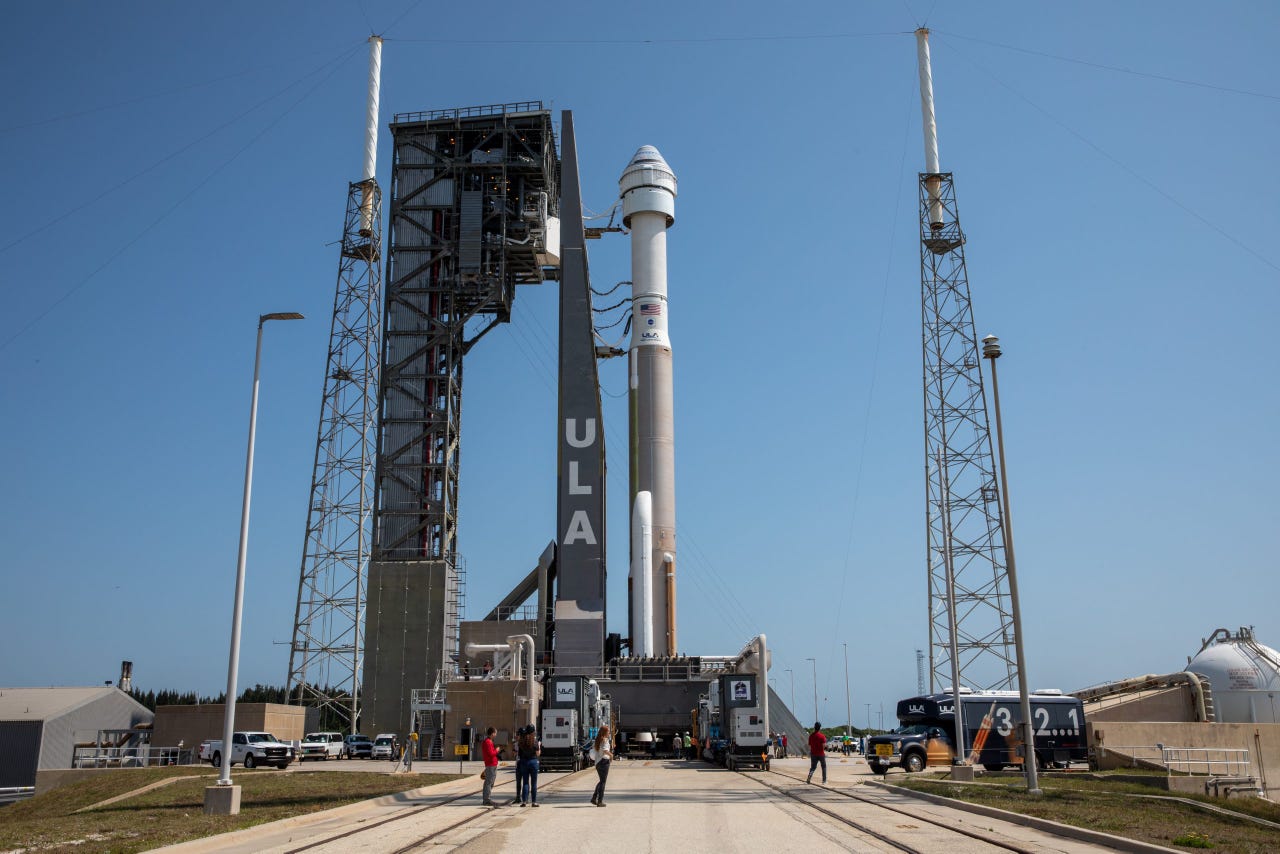
































On May 18, 2022, Boeing's CST-100 Starliner spacecraft and the United Launch Alliance Atlas V rocket roll out from the Vertical Integration Facility to the launch pad at Space Launch Complex-41 on Cape Canaveral Space Force Station in Florida.
NASA/Kim ShiflettThursday evening, Boeing is set to launch the Starliner spacecraft from the Cape Canaveral Space Force Station. The unmanned launch comes after two other failed attempts to send the Starliner to the International Space Station over the past three years. Boeing -- and NASA -- are surely hoping the third time is a charm.
Since 2020, NASA astronauts have been relying on SpaceX's Crew Dragon spacecraft to reach the ISS, but "it's really important we have the Boeing spacecraft also flying," NASA Associate Administrator Bob Cabana said during a live-streamed event Wednesday. "We want that dissimilar redundancy between SpaceX and Boeing so that if there's a problem with one, we still maintain access to our International Space Station."
NASA retired its own space shuttle program in 2011 with plans to rely more on the nascent commercial space industry. In 2014, the government agency awarded two major contracts to bring the plan to life: Boeing received$4.2 billion to build the Starliner, while SpaceX was granted$2.6 billion to build the Crew Dragon.
Meanwhile, before NASA's Commercial Crew Program (CCP) was fully operational with the help of SpaceX, NASA astronauts relied on the Russian Soyuz program to travel to the ISS.
Both Boeing and SpaceX planned unmanned test flights in 2019, but only the Crew Dragon made it to the ISS. Boeing launched the Starliner in December 2019, but the spacecraft had to return to Earth before docking at the ISS due to software glitches. Then in 2021, the Starliner's second launch was scrapped due to problems with its valve system.
The unmanned test flight -- the Orbital Flight Test (OFT) mission -- is key to ensuring the vehicle is ready to carry a crew to the ISS. Boeing's OFT-2 mission is slated to launch Thursday at 6:54 p.m. EDT with the help of an Atlas 5 rocket provided by the United Launch Alliance. Prelaunch activities, launch, and docking will air live on NASA Television, the NASA app, and the agency's website.
Also: NASA's Mars lander is running out of power. Here's what happens next
The OFT-2 mission is designed to test the launch in conjunction with ULA, and it's designed to test the Starliner's rendezvous with the ISS -- the spacecraft's ability to locate the ISS and dock. After it docks, the spacecraft will power down, and the crew currently on the ISS will go inside to test communications back to mission control and other systems.
While the Starliner won't be carrying any people, it is carrying about 500 lbs of cargo for the ISS. It's also bringing an astronaut mannequin named Rosie, which should provide some insight into how well the Starliner should carry real astronauts. The Starliner will return to Earth with nearly 600 pounds of cargo, including reusable Nitrogen Oxygen Recharge System (NORS) tanks that provide breathable air to station crew members. The whole mission will last about five days.
"We have a lot of data to get back from this mission," Cabana said. "Then we'll fly crew when we're ready. It's possible we could fly it before the end of the year, but we've got a lot to do to certify this vehicle."
 Hot Tags :
Innovation
Space
Hot Tags :
Innovation
Space